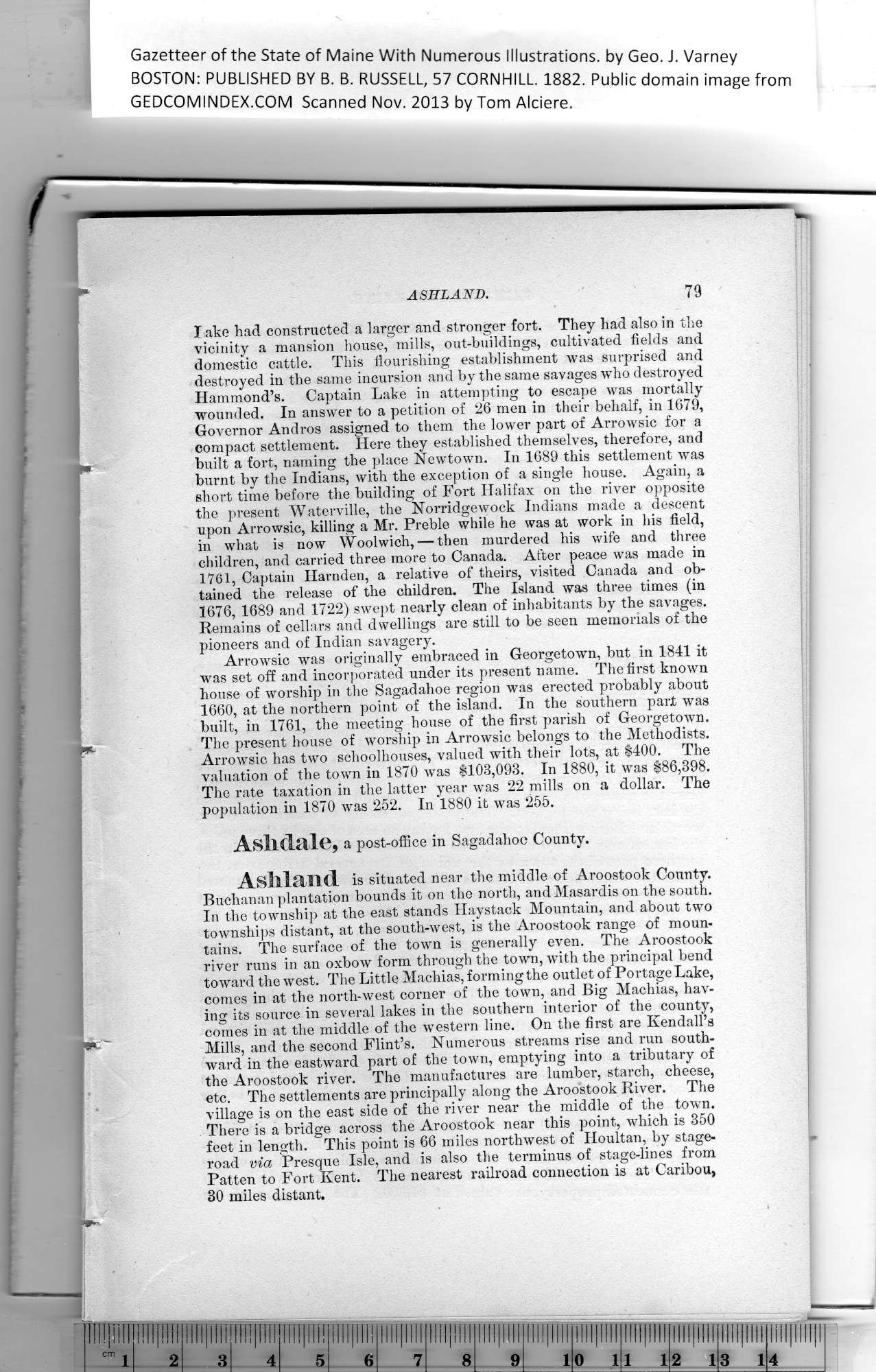|
ASHLAND. 79
Lake had constructed a larger and stronger fort. They had also in the
vicinity a mansion house, mills, out-buildings, cultivated fields and
domestic cattle. This flourishing establishment was surprised and
destroyed in the same incursion and by the same savages who destroyed
Hammond’s. Captain Lake in attempting to escape was mortally
wounded. In answer to a petition of 26 men in their behalf, in 1679,
Governor Andros assigned to them the lower part of Arrowsic for a
compact settlement. Here they established themselves, therefore, and
built a fort, naming the place Newtown. In 1689 this settlement was
burnt by the Indians, with the exception of a single house. Again, a
short time before the building of Fort Halifax on the river opposite
the present Waterville, the Norridgewock Indians made a descent
upon Arrowsic, killing a Mr. Preble while he was at work in his field,
in what is now Woolwich, — then murdered his wife and three
children, and carried three more to Canada. After peace was made in
1761, Captain Harnden, a relative of theirs, visited Canada and ob-
tained the release of the children. The Island was three times (in
1676, 1689 and 1722) swept nearly clean of inhabitants by the savages.
Remains of cellars and dwellings are still to be seen memorials of the
pioneers and of Indian savagery.
Arrowsic was originally embraced in Georgetown, but in 1841 it
was set off and incorporated under its present name. The first known
house of worship in the Sagadahoe region was erected probably about
1660, at the northern point of the island. In the southern part was
built, in 1761, the meeting house of the first parish of Georgetown.
The present house of worship in Arrowsic belongs to the Methodists.
Arrowsic has two schoolhouses, valued with their lots, at $400. The
valuation of the town in 1870 was $103,093. In 1880, it was $86,398.
The rate taxation in the latter year was 22 mills on a dollar. The
population in 1870 was 252. In 1880 it was 255.
Ashdale, a post-office in Sagadahoc County.
Ashland is situated near the middle of Aroostook County.
Buchanan plantation bounds it on the north, and Masardis on the south.
In the township at the east stands Haystack Mountain, and about two
townships distant, at the south-west, is the Aroostook range of moun-
tains. The surface of the town is generally even. The Aroostook
river runs in an oxbow form through the town, with the principal bend
toward the west. The Little Machias, forming the outlet of Portage Lake,
comes in at the north-west corner of the town, and Big Machias, hav-
ing its source in several lakes in the southern interior of the county,
comes in at the middle of the western line. On the first are Kendall’s
Mills, and the second Flint’s. Numerous streams rise and run south-
ward in the eastward part of the town, emptying into a tributary of
the Aroostook river. The manufactures are lumber, starch, cheese,
etc. The settlements are principally along the Aroostook River. The
village is on the east side of the river near the middle of the town.
There is a bridge across the Aroostook near this point, which is 350
feet in length. This point is 66 miles northwest of Houltan, by stage-
road via Presque Isle, and is also the terminus of stage-lines from
Patten to Fort Kent. The nearest railroad connection is at Caribou,
30 miles distant.
PREVIOUS PAGE ... NEXT PAGE
This page was written in HTML using a program written in Python 3.2
|
